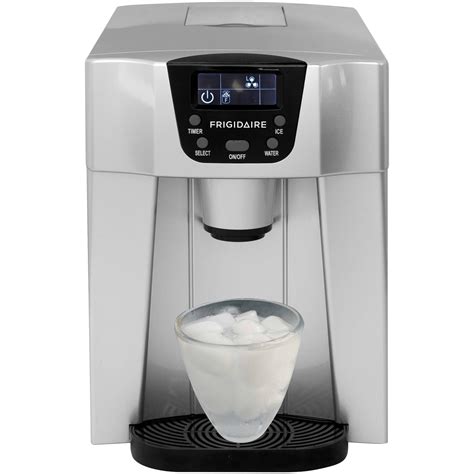#Icemakers: An Essential Kitchen Appliance for Convenience and Health

#Icemakers: An Essential Kitchen Appliance for Convenience and Health
Icemakers have become an indispensable appliance in modern kitchens, offering convenience, health benefits, and cost savings. This article provides a comprehensive overview of icemakers, including their types, benefits, maintenance, and safety guidelines.
Types of Icemakers
Icemakers come in two main types:
1. Freestanding Icemakers
* Portable and countertop-friendly
* Ideal for apartments, offices, or small kitchens
* Can produce 10-25 lbs of ice per day
2. Built-in Icemakers
* Installed within a refrigerator or freezer
* Integrate seamlessly into kitchen décor
* Can produce 50-150 lbs of ice per day
Benefits of Icemakers
Icemakers offer numerous advantages:
1. Convenience
* Ready access to chilled ice at all times
* Eliminates the hassle of buying and lugging ice bags
2. Health Benefits
* Icemakers use filtered water, reducing impurities and contaminants
* Consuming chilled water helps maintain hydration
* Ice can be used for cold compresses to alleviate pain and inflammation
3. Cost Savings
* Icemakers can save money compared to buying pre-bagged ice
* Energy-efficient models minimize electricity consumption
Icemaker Capacity and Production
The capacity of an icemaker is measured in pounds per day. The daily ice production of icemakers varies depending on:
* Icemaker type (freestanding or built-in)
* Brand and model
* Ambient temperature
Icemaker Maintenance
Icemakers require regular maintenance to ensure optimal performance and prevent contamination:
1. Cleaning
* Clean the ice bin and dispenser regularly with warm water and dish soap
* Avoid using harsh chemicals or abrasive cleaners
2. Descaling
* Descale the icemaker every 6-12 months to remove mineral buildup
* Use a commercial descaling solution or vinegar
3. Filter Replacement
* Replace the icemaker filter every 6 months
* Ensure the filter is compatible with the icemaker model
Safety Guidelines for Icemakers
It is crucial to follow safety guidelines when using icemakers:
1. Never touch the icemaker blade
2. Keep hands and foreign objects away from the ice dispensing area
3. Unplug the icemaker before performing any maintenance
4. Avoid placing heavy objects on the ice bin
Icemaker Troubleshooting
Common icemaker problems and solutions include:
1. No Ice Production
* Check if the icemaker is turned on and connected to power
* Ensure the water supply is connected
* Check if the ice bin is empty or tilted
2. Slow Ice Production
* Clear any ice堵塞 in the ice bin or dispenser
* Clean the icemaker to remove any mineral buildup
* Check if the water filter needs replacement
3. Noisy Icemaker
* Check for any loose parts or components
* Ensure the icemaker is level and stable
* Call a qualified technician if the noise persists
Humorous Icemaker Anecdotes
Icemakers have been the subject of humorous anecdotes and stories:
* One elderly couple accidentally used their icemaker as a vegetable bin, storing carrots and celery in it.
* A group of friends discovered their icemaker was producing ice cubes shaped like miniature penguins.
* A pet owner caught their dog happily chewing on ice cubes from the icemaker, mistaking them for treats.
Conclusion
Icemakers are a valuable kitchen appliance that provides convenience, health benefits, and cost savings. By understanding the different types, benefits, and maintenance requirements of icemakers, you can choose and use them effectively. By following safety guidelines and troubleshooting common problems, you can enjoy the benefits of icemakers for years to come.
